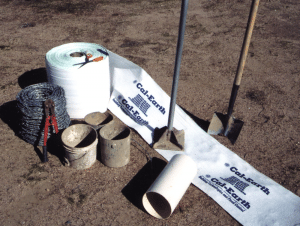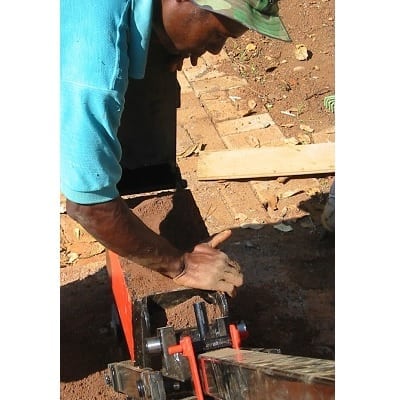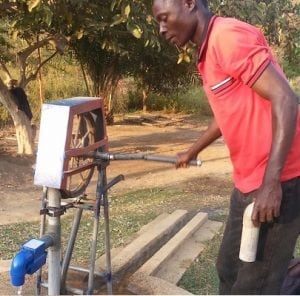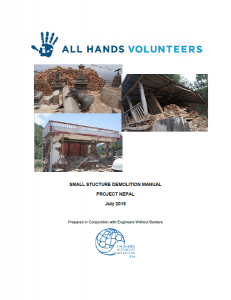
Agriculture
February 27, 2024
CalEarth SuperAdobe
Read SolutionImplemented by
California Institute of Earth Architecture (CalEarth)

Updated on March 8, 2024
·Created on August 27, 2015
Terrabric 2B is a soil-cement brick making machine.
New Dawn Engineering Terrabric Machine 2B is a soil-cement brick making machine made from steel sections with “axle steel” shafts. The Terrabric 2B is capable of producing about 1,200 bricks per day.
Target groups are Low income self-built housing market: Small groups that want to earn a living making bricks for sale in the immediate area (wheelbarrow distance), and people building their own homes.
Target SDGs
SDG 11: Sustainable Cities and Communities
Market Suggested Retail Price
$542.84
Market Suggested Retail Price (Secondary Currency)
6800
Target Users (Target Impact Group)
Household, Community
Distributors / Implementing Organizations
New Dawn Engineering
Competitive Landscape
Direct competitors include Makiga Stabilized Soil Block Press, BLM-12-8M by EarthTek Inc., Hydraform M9, Adopress 5000, and AECT Impact 2001A Compressed Earth Block Machine.
Regions
Africa
Intellectural Property Type
Patent
User Provision Model
Products can be ordered via email and phone through the New Dawn Engineering website.
Distributions to Date Status
About 1500 Interview with representative
System Dimensions
Unknown
Portability (yes/no)
Yes
Raw materials used
Earth, clay, sand, and cement
Recommended water content (ratio)
15%
Induced pressure (Mpa)
4 – 7 MPa
Power source
Manual
Finished unit dimensions
29 x 15.4 x 10.8 m3
Rate of production (units/hour)
1200 units/hour
Curation duration (days)
28 days
Suitable climate
Not suitable for cold climates unless necessary vapor barriers and insulation can be added. On their own ISSBs and CEBs do not hold up well to freeze/thaw cycles and have a low thermal insulation capacity.
Design Specifications
Mobile capabilities
Finished brick size (LxWxH) (cm3): 29 x 15.4 x 10.8
Bricks can be made of soil and cement, or subsoil only
Machine Weight (kg): 80
Technical Support
New Dawn Engineering offers training seminars in the design, buliding, maintenance, use, and economics of their products. A full list of instructions with pictures is available on their website.
Replacement Components
Unknown
Lifecycle
3-month manufacturer warranty. Lifecycle is 400,000 to 600,000 bricks produced, if kept properly oiled and greased. Disposal information not specified. Interview with representative
Manufacturer Specified Performance Parameters
Testing of soil cement bricks has been done using the SABS (South Africa Bureau of Standards) method for ordinary bricks. The products are usually made to order – i.e. to the customer’s requirements. That varies considerably. The normal routine is to take ten, crush them, toss the result for the highest and lowest, average the 8 remaining results, see if the weakest is more than 20% less than the mean, and if needed, de-rate the whole until the lowest is 20% below the rated number. Typical targets are 4 MPa, 7 MPa and ‘filler bricks’ which do not need any particular strength. 19 MPa bricks gave been made from soil using a bit less than 10% cement. Interview with representative
100 bricks per person per day, maximum 1200 bricks per day
Induced to 5 Mpa or pressure
30 bricks per square meter"
Vetted Performance Status
Unknown
Safety
Unknown
Complementary Technical Systems
Unknown
Academic Research and References
Patel, D. N., & Pitroda, J. R., 2014, Techno Economical Development of Low-Cost Interlocking Paverblock by Partially Replacement of Portland Pozzolana Cement With used Foundry Sand Waste, Journal of International Academic Research for Multidisciplinary, Volume 2, Issue 4, 607-615.
“Terrabrick Machine”, New Dawn Engineering, accessed on March 8, 2024, https://www.newdawnengineering.com/website/brickandtile/tbrick/
Compliance with regulations
New Dawn Engineering's products are designed to international standards.
Evaluation methods
Field testing
Other Information
New Dawn Engineering Website
“Prices”, New Dawn Engineering, accessed on March 8, 2024, https://www.newdawnengineering.com/website/prices/prices.php
This picture shows the Terrabric 2B in mass production.

Agriculture
February 27, 2024
Implemented by
California Institute of Earth Architecture (CalEarth)

Agriculture
June 23, 2024
Implemented by
Code for America

Agriculture
June 24, 2024
Implemented by
WellDone

Agriculture
June 22, 2024
Implemented by
OX Global Ltd

Agriculture
June 24, 2024
Implemented by
RugGear

Agriculture
June 29, 2024
Implemented by
Hexagon Safety & Infrastructure

Agriculture
June 26, 2024
Implemented by
DAI Maker Lab

Agriculture
June 29, 2024
Implemented by
YallaBus

Agriculture
February 23, 2024
Implemented by
All Hands Volunteers (All Hands and Hearts)

Agriculture
February 21, 2024
Implemented by
Kounkuey Design Initiative
Have thoughts on how we can improve?
Give Us Feedback